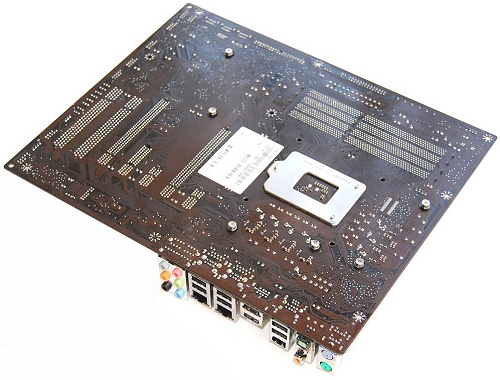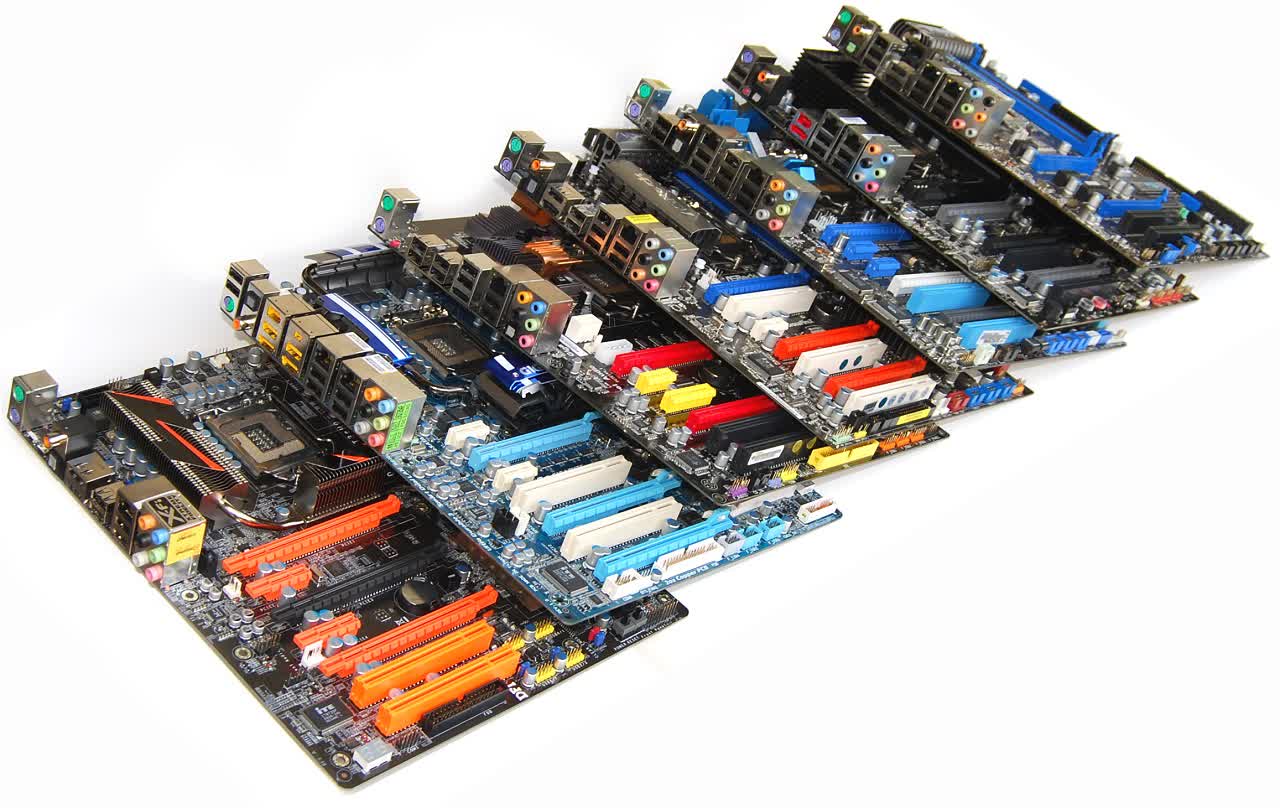MSI P55-GD65 – Design
The MSI P55-GD65 is not a particularly flashy motherboard, but it does look fairly impressive nonetheless. Like most P55 motherboards the cooling is focused around the CPU socket where it is designed to cool the power circuitry. There is also a very small heatsink covering the P55 chip in the bottom right hand corner of the motherboard.

All three heatsinks are dark gray with the small P55 heatsink labeled "MSI" and the other larger two labeled "DrMOS". The DrMOS technology combines a top MOSFET and a bottom MOSFET into one chip. The shorter distance between every component provides 4 times faster phase switching speed and over 90% better power efficiency. The design not only decreases the working temperature, but also increases the stability of the power supply, especially when overclocking.


Due to this design the DrMOS-based MOSFETs will actually provide the power switching capabilities comparable to four standard MOSFETs. This means although the P55-GD65 only features a 6+1 phase design it should effectively work as a 24-phase design. This is an interesting and far more cost effective way of improving efficiency compared to the 24-phase design of the Gigabyte P55-UD6.


Another interesting feature aimed at overclockers is called V-Kit, composed of two parts. V-Check Points provide power measurement pins and an on/off switch. Users can measure the CPU and RAM voltages with a multi-meter, while the V-Switch feature provides the maximum system voltage within a definite range in one switch. The feature can help save advanced overclockers valuable time by eliminating the need for manual circuit modification.


The physical board layout of the P55-GD65 is perhaps the best designed P55 motherboard in our round-up along with the EVGA P55 FTW. The common DIMM slot/PCIe x16 connector conflict is not present and we found installing/removing memory on this motherboard to be a breeze with a large graphics card installed. Speaking of the DIMM slots, there is a nice function called APS that uses four blue LED lights at the top of the slots to indicate load levels.


MSI has mounted the 6 SATA ports connected to the P55 chip at a 90-degree angle to avoid any conflicts with long graphics cards. The remaining 7th on-board SATA port has been mounted flat instead. The additional USB 2.0 and Firewire headers are neatly tucked away at the bottom of the motherboard, where they can be easily accessed.

Moving around to the I/O panel we have a pair of PS/2 ports, 7 USB 2.0 ports, 2 LAN ports, 6 audio jacks, a S/PDIF and Coaxial port along with a single eSATA and Firewire port.
